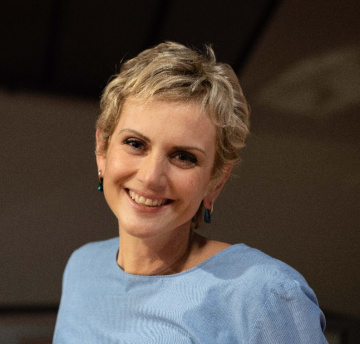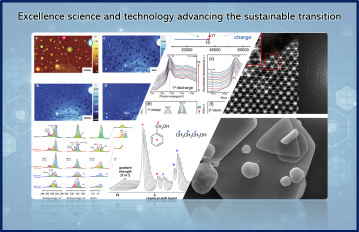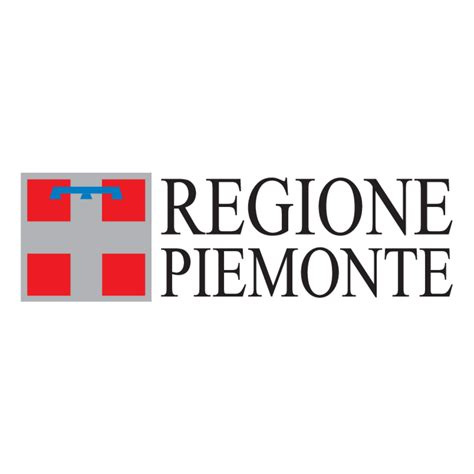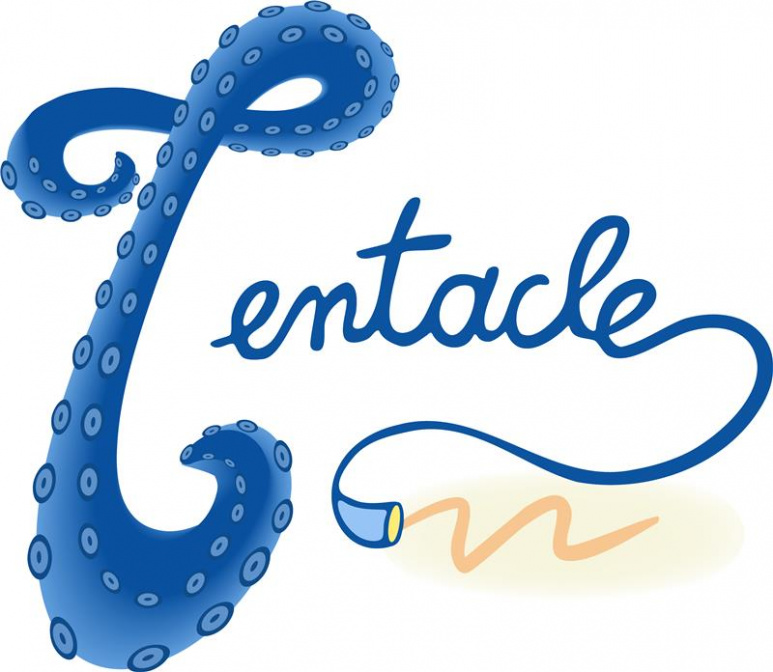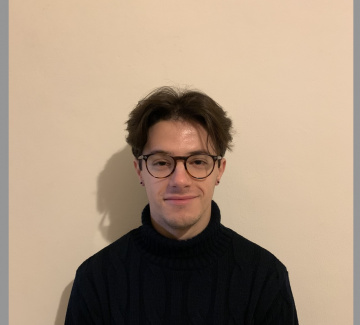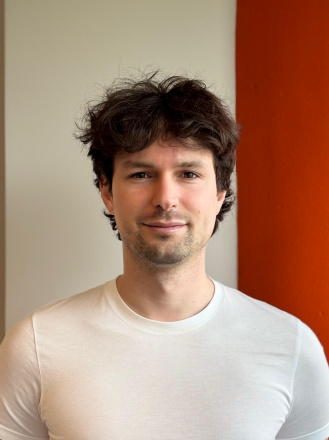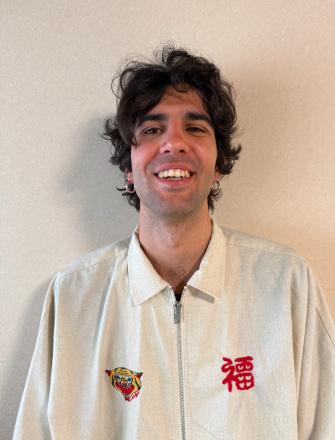Number 1 - 30.04.2025
WELCOME TO OUR NEW NEWSLETTER
by Debora FINO
|
|
Dear colleagues, I am pleased to welcome you to the first edition of our newsletter — a space designed to strengthen our sense of community, share knowledge and experiences, and highlight the many activities that bring our Department to life! The newsletter will be published periodically and will collect and share useful information and updates about:
And that’s not all! You will also discover what’s "cooking" in the Life and Welfare Committee, updates on the transformation of the Library, the organization of "speak easy moments" in Courtyard 3, and much, much more. Our goal is to create a dynamic, participatory, and inclusive tool that reflects the value and vibrancy of our daily work. For this reason, I invite you to contribute with reports, suggestions, and content you find meaningful: this newsletter belongs to all of us and will grow with our involvement. For example, you are welcome to propose the launch of a column dedicated to a topic you believe should resonate across the Department. A heartfelt thanks to the Communication and Culture Committee of DiSAT, which created this new communication channel — I am confident it will become a valuable reference point for our community. Happy reading! Debora Director of DiSAT |
DiSAT IS DEPARTMENT OF EXCELLENCE
by Claudio Gerbaldi
| The Department of Applied Science and Technology (DiSAT) at the Politecnico di Torino has been selected for the prestigious “Departments of Excellence” 2023–2027 initiative, a national program funded by MUR that recognizes and supports university departments that feature outstanding research performance. This recognition not only affirms DiSAT excellence, but also provides a valuable opportunity to further strengthen its research and innovation activities. Project objectivesThe project aims at strengthening DiSAT position as a leader in research on materials and processes for the sustainable energy transition and decarbonization, guided by the principles of circular economy and sustainability. Key areas of development include:
Funding and resourcesThanks to this project, DiSAT will receive significant funding aimed at:
Expected impactThe implementation of this project is expected to have a significant impact on multiple fronts:
Advanced Research InfrastructureDiSAT has chosen to strengthen its research activities through the acquisition of advanced equipment. Among the key additions is the X-ray absorption spectroscopy system (Lab-XAS), which will enable unprecedented research into material structures and properties at an atomic-scale level, including operando measurements to monitor reactions and processes in real time, and a 600 MHz high-resolution nuclear magnetic resonance (HR-NMR) spectrometer, essential for investigating structure and conformation of both organic and inorganic materials. These instruments will not only enrich the research capabilities of the department, but also open up new opportunities for international collaborations and measurement services for external organizations. The advanced compositional analysis laboratory to be established as part of this project, equipped with the Lab-XAS and the 600 MHz HR-NMR, will fairly integrate with the Center of Excellence for microscopy developed during the previous “Departments of Excellence” project (2018–2022). This center is likewise instrumental to the study and characterization of innovative materials developed in DiSAT. It features a high-resolution transmission electron microscope (empowered with a new cell for in situ / operando measurements) and two scanning electron microscopes equipped with EDX systems. Additionally, the department boasts major scientific equipment, including the newly revamped XPS, the nanoIR system, instruments for XRD, Raman, and micro-Raman spectroscopy, and a Bruker Innova scanning probe microscope with modules for Atomic Force Microscopy (AFM) and Scanning Tunneling Microscopy (STM), which include specialized modules for thermal scanning and nanoscale thermal analysis with a resolution of 20 nm, an outstanding feature of excellence. |
|
|
|
|
ConclusionThe project “Departments of Excellence” 2023–2027 represents a unique opportunity for DiSAT to strengthen its role as a leader in research and innovation at national and international level, sizably contributing to the transition toward a sustainable energy future. For more information, please visit the official project website: Progetto "Dipartimenti di Eccellenza" 2023-2027 - DiSAT |
|
A LEGACY OF EXCELLENCE: CLASSIC AND CUTTING-EDGE MICROSCPY TOOLS AT YOUR SERVICE
by Francesca Stefania Freyria
| “If I don’t see it, I don’t believe it.” How many times have we all said that? Luckily, our Microscopy Facilities Lab, established in 2021 as part of the Department of Excellence framework, helps us turn that belief into reality. Tucked away in the basement, just below Entrance 1, is where the lab has found its place — and where some of our most powerful instruments have found a home. In three dedicated 25 m² rooms, Marco Allione and Salvatore Guastella, our responsible and skilled technicians, take care for a FIB-SEM, an HRTEM, and an SEM, ensuring the lab runs and supporting our research and discoveries. Looking for precision at the micro- and nano-scale? Our SOLARIS X dual-beam system, built by TESCAN, is the most powerful FIB-SEM in the Torino area, offering advanced imaging, large volume 3D sample reconstructions and material modification capabilities. It combines a high-resolution SEM with a field emission gun (FEG) for detailed morphological and compositional analysis (EDS) and supports electron beam lithography. In addition, the focused ion beam (FIB) column, powered by a Xenon ions plasma source, allows ultra-precise cutting, milling, and ablation at the micro- and nano-scale, all with real-time imaging. With three gas injection systems (GIS) for growing custom micro-and nano-structures of any arbitrary shape, and a nanomanipulator for extracting ultra-thin samples ready for TEM, the SOLARIS X opens up endless possibilities for innovation. Want to dive deep into the atomic world? In the middle room, we have the TALOS F200X from Thermo Scientific, perfect to reach 1-Angstrom resolution. Equipped with an XFEG (field emission gun), it enables high-resolution morphological and compositional analysis of thin samples. In parallel beam mode (TEM mode), you can capture stunning Bright Field (BF), Dark Field (DF), and high-resolution (HRTEM) images at up to 1 million times magnification with a 16-megapixel CMOS sensor. Switching to convergent beam mode (STEM), you can unlock powerful imaging in BF, DF, and High-Angle Annular Dark Field (HAADF) modes, combined also with advanced analytics: high-efficiency EDS mapping thanks to four quadrant silicon drift detector (SDD) and EELS spectroscopy using a Gatan energy filter system, captured on the onboard 4-megapixel camera. The system also supports 3D tomographic reconstruction by acquiring mages at different tilt angles. Plus, it's equipped with a special sample holder for MEMS-type chips, allowing in-situ temperature control, application of electrical bias, and multi-contact electrical measurements. |
|
|
|
| For exploring morphology with a 2.5D/3D-like appearance, we also have the Merlin scanning electron microscope from Zeiss. Equipped with a powerful field emission gun (FEG), this microscope provides advanced morphology analysis using multiple electron detectors and an energy dispersive X-ray detector (EDS) for atomic composition mapping. With its dedicated STEM detector, you can capture transmission electron images to gain a deeper look into your materials. |
|
|
|
|
| So, are you ready to see your samples like never before? |
|
NEW RESEARCH PROJECTS KICK OFF!
The DiSAT fall/winter 2024-2025 collection
by Sara Di Bari
DiSAT at Politecnico di Torino is in full swing: new research projects recently approved are paving the way for unprecedented resources, innovative ideas and exciting collaborations.
The funding comes from major competitive calls: Horizon Europe, Ministerial, SWIch from Regione Piemonte and the PNRR. This is an achievement that testifies to the quality of our proposals and the ongoing commitment of those doing research at DiSAT.
The strategic topics addressed are many and of great impact: from advanced materials and nanotechnology to sustainable chemistry, from biotechnology and regenerative medicine to clean energy and storage, passing through environment, microplastics, flexible electronics, AI and foodtech. Not forgetting theoretical physics and molecular simulations. A beautiful sign of the vitality of our department!
Check out the full list of projects below. It's a journey through science, technology and the future.
|
|
TALISSMAN - Technologies for Advanced LIthium-Sulfur batteries toward Safe and Sustainable Mobility Applications Funding: Horizon Europe - HE - Global Challenges - CL5 Climate, Energy and Mobility Scientific responsible: Dr. Daniele Versaci Duration: 07/2025 - 06/2029 The BATT4EU Partnership's SRIA emphasizes the urgent need for investment in long-term research on Generation 5 (Gen5) battery solutions to overcome the limitations of Li-ion technology and strengthen the EU's industrial autonomy. TALISSMAN’s primary objective is to lead the development of safe, sustainable, high-performance, and cost-effective Gen5 lithium-sulfur batteries (LSBs) for aerospace and other electromobility applications. By bringing together a multidisciplinary consortium of research institutions and top-tier industry leaders, TALISSMAN will develop and demonstrate two advanced battery pathways in small-scale, multi-layer pouch cell format (TRL4): (i) a hybrid quasi-solid gelled concept (Gen2027) and (ii) an all-solid-state sulfide approach (Gen2030). TALISSMAN will tackle critical challenges hindering LSB industrialization, such as polysulfide shuttling and stabilizing the lithium metal anode/ electrolyte interface. These efforts will involve developing optimized materials and components, improving cell design and assembly, and refining manufacturing techniques to ensure compatibility and easy integration with existing Gen3 LIB production lines. Iterative feedback loops will optimize the technology’s techno-economic performance, while advanced characterization techniques and novel modelling approaches will enhance the understanding of reaction mechanisms, performance limitations, and degradation processes. The project will incorporate a Safe and Sustainable-by-Design framework, including essential safety and environmental criteria, and promote efficient resource use through life-cycle assessments, eco-design principles, and innovative recycling processes. Lastly, dissemination, exploitation, and communication activities, rooted in an Open Science approach, will support the project, facilitating the future industrial deployment of TALISSMAN's solutions, and contributing to the establishment of a competitive and sustainable battery industry in Europe. |
| HYDROLAB - LABORATORIO IDROGENO Funding: Regione Piemonte - SWIch Scientific responsible: Prof. Candido Fabrizio Pirri Duration: 11/2024 - 05/2027 This program aims to develop the strategic elements of a liquid hydrogen distribution chain in an aeronautical environment through the technological development of the critical cryogenic elements of such a chain: electric pumps, valves, even exchangers, etc. The project has a duration of 30 months and is designed as follows: A technical objective of defining key products through a decoupled approach of technological enablers in order to build a product foundation (Objectives: materials OR3 and OR4: technological). We can particularly note the need to strongly develop materials knowledge on this topic because of hydrogen reactivity with long-term certainty (called embrittlement and lifecycle linkage). We add the accompaniment by a strategic-economic analysis with innovative methods (Objective OR2), addressed by end users (Objective OR1) in order to build a business function. Finally, the study of the test concept for the validation of the previous technical sets (Objective OR5), i.e., the definition of a key set of test facilities in LH2, a facility to date not available in the Italian territory in which it will have to be an asset for future developments. |
|
|
|
SMIP – Sistemi Microelettronici In Package Funding: Regione Piemonte – SWIch Scientific responsible: Prof. Luciano Scaltrito Duration: 12/2024 - 06/2027 The SMIP project aims to carry out a study on SiP (System in Package) technology aimed at maturing the design and development technologies of all those processes necessary to introduce packaging at the device level, while ensuring environmental sustainability. The project has a high technological and application complexity, integrating technologies such as: electronic component testing, laser welding, molding, and micro- to macro-scale interface processes. The project has high technological and application complexity, integrating technologies such as: testing of electronic components, laser welding, co-molding, interface processes between micro and macro scale |
| e-KEROMETH – Co-elettrolisi di CO2 ed H2O per la produzione di e-fuels rinnovabili Funding: PNRR M2C2-Idrogeno Responsible: Prof. Samir Bensaid Duration: 02/2025 – 06/2026 The objective of the e-KEROMETH (Co-electrolysis of CO2 and H2O for the production of renewable e-fuels) proposal is to integrate the co-electrolysis of steam and CO2 with new catalytic processes to convert waste CO2 into quality liquid fuels, with primary interest in e-kerosene for aviation use, and into gaseous fuels (e-methane) that can be dynamically integrated into the existing infrastructure. |
|
|
|
TENTACLE – InnovaTivE in situ 4D biopriNTing for regenerAtion of CoLorEctal mucosa and submucosa Funding: Horizon Europe - HE - Global Challenges - CL1 Health Responsible: Prof.ssa Chiara Vitale Brovarone Duration: 01/2025 – 12/2028 Colorectal diseases are a cohort of pathologies that affect the mucosa and submucosa layers of the anus, rectum, and colon of more than 2 million individual in the EU. Among them, familiar adenomatous polyposis (FAP) and ulcerative colitis (UC) seriously compromise the patients’ quality of life. These pathologies could benefit from the removal of the intestinal mucosa and submucosa, however no strategies exist nowadays for their replacement. Then, when their removal is necessary, the patients undergo a proctocolectomy (i.e., surgical removal of the rectum and all or part of the colon) with a subsequent ileal pouch. Although preserving the patient's continence, the procedure is burdened by significant complications. In this scenario, TENTACLE pioneers a radically new strategy for the surgical treatment of UC and FAP, providing an innovative in situ 4D bioprinting strategy, for the regeneration of colorectal mucosa and submucosa. The TENTACLE in situ 4D bioprinting suite include: i) a colonoscopic bioprinter, featuring an extrusion-based bioprinting unit, an valvejet printhead, a mesh delivery system and a photocrosslinking device; ii) in silico tools for personalizing the bioprinting procedure; iii) two novel bespoken bioink formulations containing patients’ cells, including suitable functionalization strategies. The mucosal formulation will feature a 4D shape morphing behavior to recreate the colorectal mucosal crypts. Within TENTACLE, the entire procedure will be validated ex vivo and in vivo, thus paving the way for translating the bioprinting suite toward the clinics, by: i) identifying a GMP-compliant cell expansion protocol, ii) scaling up of the manufacturing routes, iii) promoting involvement and acceptance of surgeons and patients, iv) aligning with the EU regulation. Collectively, our project will introduce a minimally invasive alternative to proctocolectomy and is expected to have a high impact on the quality of life of patients affected by FAP and UC. |
| IPER – Interdisciplinary approaches and Processes for Reserarch on precision oncology Funding: Regione Piemonte - SWIch Responsible: Prof. Matteo Cocuzza Duration: 11/2024 – 05/2027 The project aims to create technological devices and algorithms for precision oncology, with the goal of simplifying the evaluation and implementation of improvements in the therapy of colorectal cancer, gastric cancer, and metastatic melanoma. The vision of IPeR is to build a set of tools for analyses that lead from the initial diagnosis of a tumor to the identification of the best therapies, both for drug testing and for use in individual therapy. The chain is enabled by patient-derived organoids as in vitro replicas of the tumor and by enabling technological tools: artificial intelligence algorithms and microfluidic devices. IPeR will follow an interdisciplinary technology research approach, relying on the availability of data and samples from IRCCS-FPO-led multicenter studies with the presence of temporally extensive data critical for studying endpoints such as survival and recurrence. IPeR builds on the success of “DEFLeCT,” which innovated non-small cell lung cancer therapy, and leverages synergy with the PNRR project “D3-4-Health.” IPeR expands the goals of the two projects to major diseases and broadens their ambitions in the domain of technological solutions. |
|
|
|
SYSMAGRAD – Coupling synthetic supramolecular materials with controlled chemical gradients Funding: Ministeriale FIS Responsible: Prof.ssa Debora Fino Duration: 03/2025 – 03/2028 Biomaterials such as microtubules or actin filaments, exist and function in evolving, nonhomogeneous environments, characterised by dynamic concentration gradients of chemical species. The biomaterials' prompt and precise response to these gradients, for example via aggregation, disassembly, or autonomous motion, is at the basis of the fascinating properties of living systems. Engineering synthetic supramolecular materials that respond in a similar way to chemical gradients, represents a topical challenge for supramolecular scientists. In this framework, molecular simulations represent a tool of the outmost relevance, capturing the atomic/molecular mechanisms that govern supramolecular structure and dynamics, beyond the resolution accessed by experiments. However, due to the limitations of standard in-silico techniques, simulating the response of supramolecular systems to dynamic, nonhomogeneous solution environments remains prohibitive. In this project I will leverage on the development and application of innovative methods to perform systematic simulation studies of supramolecular materials coupled with dynamic chemical gradients. Prototypical supramolecular systems will be investigated, by combining multiscale modelling techniques and advanced Molecular Dynamics approaches. This computational strategy will recreate the dynamic, nonhomogeneous environment that characterises realistic systems, providing a novel viewpoint on the simulation of supramolecular materials. The planned simulation campaigns will therefore provide precious, molecular-level insight on the mechanisms governing the coupling between supramolecular materials and chemical gradients, thereby complementing the macroscale knowledge attained in experiments. This project aims at ultimately rationalize the role of nonhomogeneous and dynamic concentration landscapes, which are prevalent in realistic systems, on the behaviour of supramolecular materials. The outcomes will pave the way for i) the establishment of new approaches for the supramolecular materials simulation, ii) the rational design of new materials with improved responsivity features, and iii) the precise engineering of supramolecular materials through external gradient control (e.g. via nanofluidic techniques |
| LEAF – SeLf-powered self-rEshaping Autarkic skin For wireless motes Funding: Horizon Europe - HE - Innovative Europe - European Innovation Council (EIC) Scientific responsible: Prof.ssa Ilka Kriegel Duration: 03/2025 – 02/2028 We will combine 3D reshaping, energy harvesting, and energy storage within a single, thin foil. The thin foil of several micrometer thickness is going to be fabricated by inkjet and capillary printing on a temporal carrier support and consists of an adhesion sacrificial layer (own technology relying on lanthanum acrylic acid coordination polymer) and a strain inducing bilayer made of hydrogel and a stiffening layer (own innovation technology). The combination of specifically designed bilayer polymer system (polyethylene alt maleic anhydride type hydrogel and polyimide materials) is able to reshape into Swiss-roll architectures with few hundreds of micrometer diameter through a selective etching of the sacrificial layer and swelling of the hydrogel in a water-based solution. We will implement high precision capillary printing (HPCAP) to print dedicated structures with high control over length, thickness and separation with (sub-)micrometer resolution and high reproducibility of a variety of materials, which deliver different functionality. Self-powering of the autonomous device is ensured through the use of bi-functional materials deposited into interdigitated micro-electrode structures, function as light converter and storage materials at the same time. The thus created photo-storage microscale supercapacitor is embedded onto the thin foil and will serve as autonomous power source for the integrated silicon chip. The 2D area of the ultrathin foil delivers maximized surface area of the interdigitated finger structure and ensures sufficient light absorption to power the integrated RFIC (e.g. an active tag/sensory system). The optimized weight (R ~ 0.95) will be granted by the ultrathin nature of the foil (around 5um), while mechanical stability of the final device is ensured through 2D-to-3D reshaping. Key feature of our final device is the ability to retain its functionality also after 3D reshaping and its deployment onto the application surface. |
|
WHAT A PHD!
Get to know PhD candidates from DiSAT doctoral courses as they reflect on their paths through research and academic life.
|
Francesco Caredda PhD Candidate in Physics 38th cycle |
Hello, what is your name and in which research group have you been working? Francesco Caredda, Statistical Physics and Interdisciplinary Applications. Can you briefly describe your PhD research? My research focuses on statistical inference methods applied to biological data. In particular, I work in proteomics. My goal is to develop architectures based on statistical physics methods that are able to capture and explain the evolutionary signal shared in an ensamble of related proteins and use it to learn structural and functional characteristics of the proteins. This, in turn, can be used to design de novo proteins with specific functionality specifically choice during the learning stage. What have you enjoyed the most about your PhD work so far? Among the aspects that I enjoyed the most during my PhD there is the total freedom I have in organising my own work. Also, the possibility of travelling abroad for conferences, schools or research periods is another fundamental part that I loved about my PhD. What challenges or difficulties have you faced during your PhD? The main challenge is to remain focused on what the goal of your research is. Research is not a linear path, most of the times your results won't agree with your prediction and you will feel down because of this. Everything is uncertain and this can be either good or bad depending on your day to day mood. The important thing is to be able to surf through the bad moods and eventually land on some positive note. What inspired you to start a PhD, and why at DiSAT? Trying the research/academic path has always been a goal of mine. Also, a PhD was the natural continuation of my master in Physics of Complex Systems here at PoliTO. The fact that I already knew the environment here and the research group played a fundamental part on my choices. Looking back at your PhD journey, do you have any reflections, advice for future PhD students, or a memorable/fun anecdote from your time at DiSAT? The biggest advice I can give is: learn how to manage your time and set short-term goals with your supervisor. Sometimes it can be easy to lose track of the direction your research is going, in those cases proper communication to your supervisor is key. Also, if you feel overwhelmed, ask your supervisor to send you for a research period abroad. You will get new stimuli and some other perspective on research. Have you already decided on your next career step? If so, would you like to share it with us? I haven't yet decided what my next thing will be. I don't exclude trying the path of doing research for a private company, even if the natural option would be that of continuing with a post-doc in academia. However, right now I want to focus on finishing my PhD and only then I will make an actual decision. |
| Hello, what is your name and in which research group have you been working? Mattia Perrone, CPC lab (supervisor: Giovanni M. Pavan). Can you briefly describe your PhD research? My PhD research explores how small-scale atomic movements influence the large-scale behavior of materials. Using computer simulations, I studied metals, soft materials like lipid membranes, and light-responsive molecules. I focused on how tiny fluctuations give rise to structural defects, and how these defects evolve and interact to produce changes in material properties. I also developed methods to design better models for simulating materials, ensuring they match both microscopic structure and experimental observations. This work connects the atomic world to real-world material behavior, with applications ranging from nanotechnology to biomaterials and responsive systems. What have you enjoyed the most about your PhD work so far? What I’ve enjoyed most so far is how unexpectedly diverse the PhD has been. Beyond the core scientific challenge of understanding and solving complex problems (which was expected), I’ve discovered how much I value other aspects, such as working with my colleagues, communicating my work through talks, posters, and papers, and engaging with collaborators and researchers at conferences. I’ve come to appreciate how research is not just about analysis, but also about dialogue and connection. I genuinely enjoy this multifaceted nature of the experience. What challenges or difficulties have you faced during your PhD? This is really the flip side of what I enjoyed most: after running simulations, analyzing data, and drawing conclusions, it often feels like the work is done; but in reality, that’s only half of it. Contextualizing the research and communicating it effectively is challenging and requires a different kind of effort. It’s not just about having results, but about making them meaningful to others. What inspired you to start a PhD, and why at DiSAT? I want to pursue a career in research, and doing a PhD is the natural first step. DiSAT offered a solid opportunity to start this path. Looking back at your PhD journey, do you have any reflections, advice for future PhD students, or a memorable/fun anecdote from your time at DiSAT? Giving advice is never easy (it may not apply to everyone) but one thing I’ve realized is that during a PhD, you’re in a unique position: you’re both a researcher and still a student. If there’s a topic you’re curious about or want to explore more deeply, take advantage of these years to do it. Have you already decided on your next career step? If so, would you like to share it with us? I think I will do a postdoc. |
Mattia Perrone PhD Candidate in Materials Science and Technology 37th cycle |
|
Giacomo Proietti Tocca PhD in Chemical Engineering 37th cycle |
Hello, what is your name and in which research group have you been working? My name is Giacomo Proietti Tocca. I worked in CREST group. Can you briefly describe your PhD research? Microalgae are a promising source of sustainable food for the future. Mixotrophic and heterotrophic cultivation strategies can improve the yield and productivity of conventional autotrophic microalgae cultivation, addressing economic sustainability challenges. However, sugars, typically used as organic carbon sources in mixotrophy and heterotrophy, are neither economically nor environmentally sustainable. This research investigates acetic acid and formic acid as alternative, more sustainable carbon sources to sugars. The goal is to enhance microalgal biomass yield and productivity without compromising its nutritional quality. This approach aims to develop an innovative, efficient, and environmentally friendly method for producing microalgae-based protein, contributing to future sustainable food systems. What have you enjoyed the most about your PhD work so far? The opportunity to develop an original idea based on the current state of the art, with the potential to contribute to technological and scientific advancement. The opportunity to test this idea and verify its actual impact within the relevant scientific field. The opportunity to exchange ideas with more experienced scientists, receiving constructive feedback and valuable suggestions. The opportunity to carry out part of the PhD at ETH Zurich, within a highly skilled and knowledgeable research group in my field of study. What challenges or difficulties have you faced during your PhD? There have often been stressful moments, mainly due to the accumulation of tasks an tight deadlines. This can be further exacerbated by the long lead times required to receive orders of reagents and laboratory glassware, which may delay the start of experimental tests. What inspired you to start a PhD, and why at DiSAT? What inspired me was the enjoyment I experienced while conducting research during my master’s thesis, an experimental study carried out at Sapienza University of Rome. Politecnico di Torino offered several interesting PhD positions, including one closely aligned with the work I had done during my thesis. Looking back at your PhD journey, do you have any reflections, advice for future PhD students, or a memorable/fun anecdote from your time at DiSAT? Pursuing a PhD is a great opportunity that allows for extraordinary personal growth, both on a human and professional level. Throughout this journey, I have become increasingly convinced that a PhD can prepare us in the best possible way to face professional life alongside our personal one. I see the PhD process as a full-fledged work experience: along the way, we had the opportunity to create our own project based on studies and research, test ideas and solutions, and describe and present the results to more experienced researchers, receiving both criticism and praise. It is a challenging and sometimes stressful path, but at the same time, one that guarantees satisfaction and experience. The support of friends, family, supervisors, and more experienced researchers is therefore invaluable. I strongly recommend a PhD program to anyone who enjoys studying and doing research. Although it can sometimes feel very challenging, the sense of accomplishment and personal growth it brings is undoubtedly rewarding. Have you already decided on your next career step? If so, would you like to share it with us? The job market today is uncertain, and it's difficult to make concrete predictions about the future…I hope to still have the opportunity to work in this scientific field, which I believe is very important for the future. I enjoy doing research, I hope continuing my work and collaboration between Politecnico di Torino and ETH of Zurich. |

